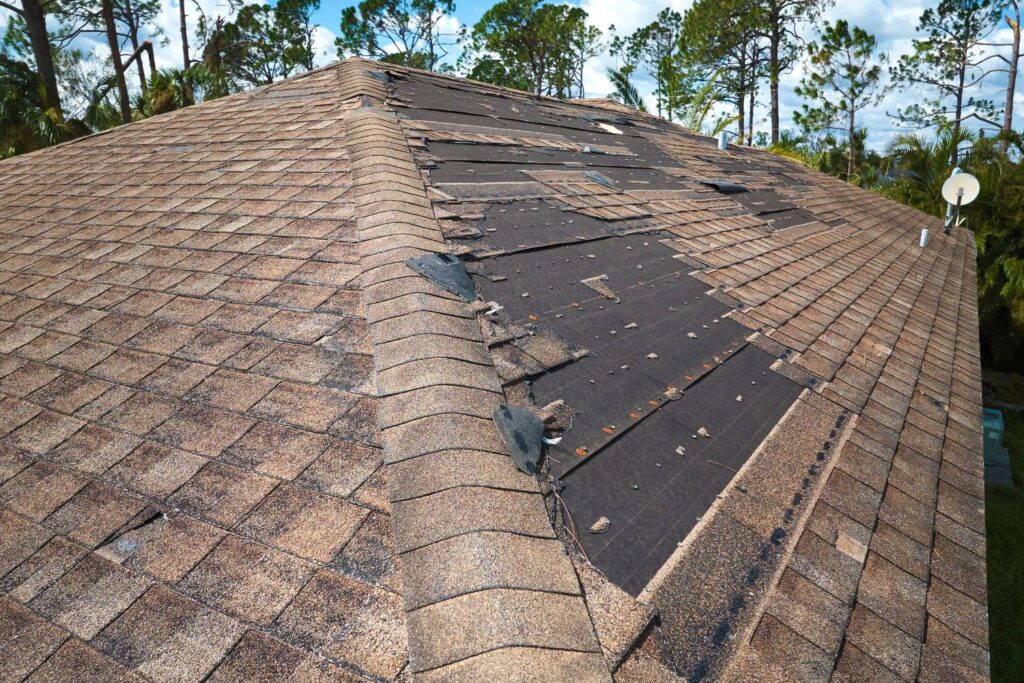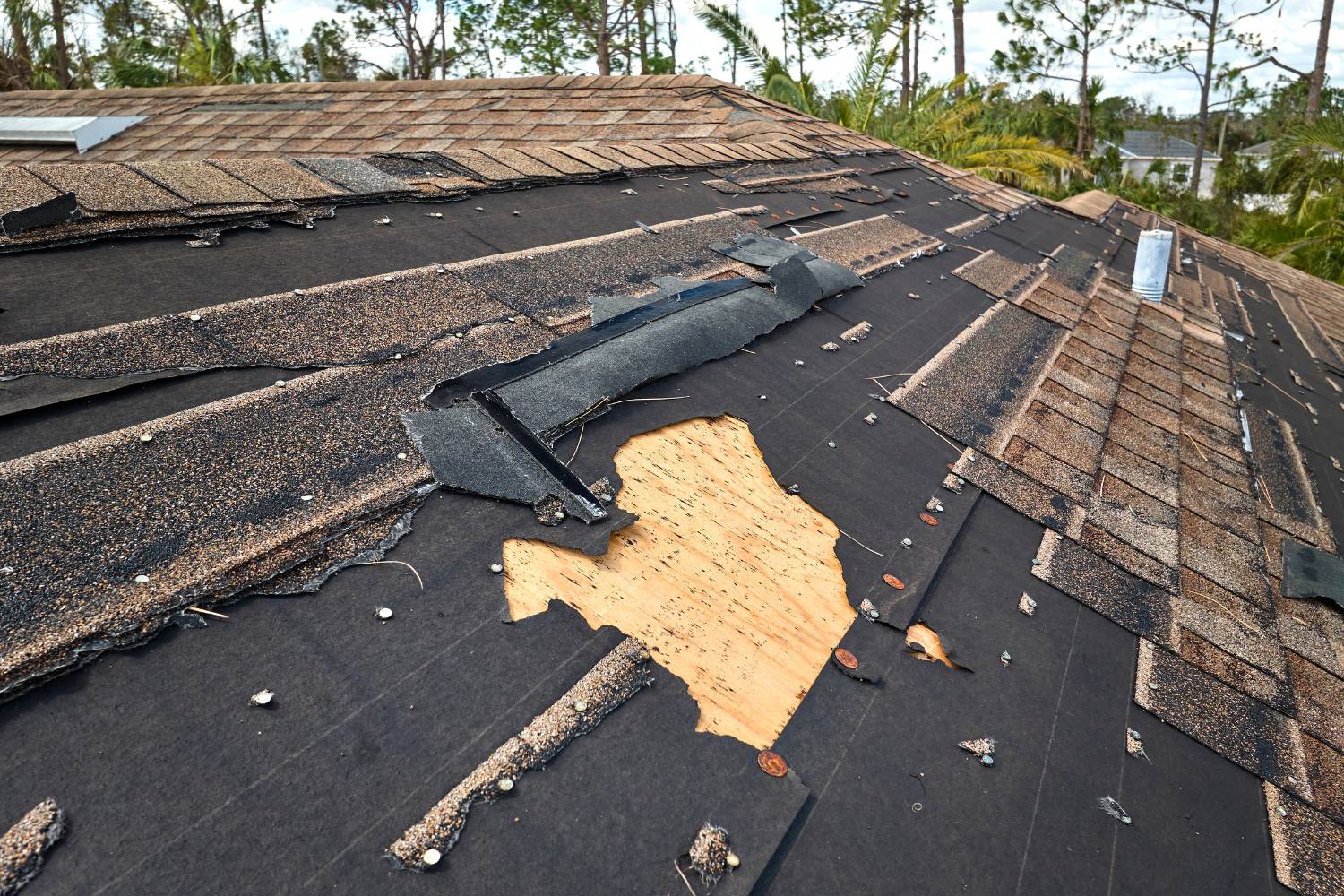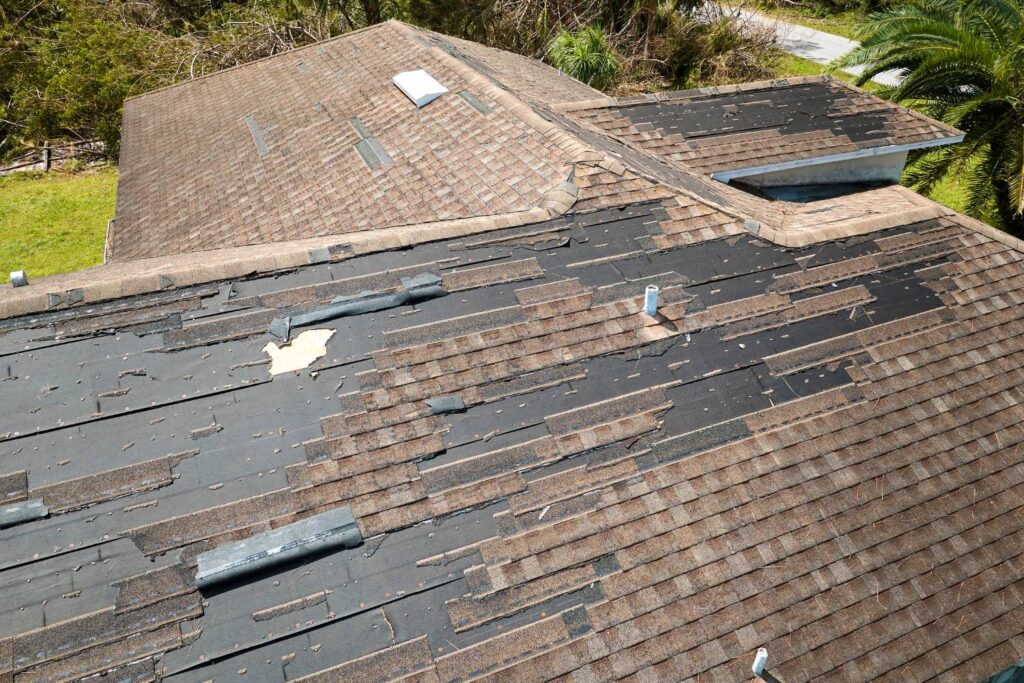Dealing with roof leaks can be a significant concern for homeowners, both financially and emotionally. When water starts dripping through the ceiling, the first question that often comes to mind is, "Will my insurance cover this?" Understanding the intricacies of homeowners insurance regarding roof leaks can help you prepare and respond appropriately, mitigating the potential financial burden.
This blog delves into the types of roof leaks typically covered by insurance, factors affecting coverage, and the process of filing a claim to ensure you are well informed and ready to tackle any roofing issues that arise.
What Types Of Roof Leaks Are Typically Covered By Insurance?
Maintaining a home can be a costly endeavour, especially when it comes to significant repairs like fixing or replacing a roof. Understanding what types of roof leaks are typically covered by homeowners insurance can help homeowners avoid unexpected financial burdens. Below is a comprehensive look at the key points regarding roof leak coverage based on insights from various sources.
General Coverage
- Homeowners' insurance typically covers roof leaks if they result from a covered peril. Covered perils often include natural disasters such as wind, hail, fire, and lightning.
- Damage from falling objects, such as a tree branch during a storm, is usually covered.
- Policies may differ significantly, so it's crucial to read the fine print and understand the specifics of your coverage.
Factors Affecting Coverage
- Age and Condition of Roof: Older roofs, especially those over 20 years old, may only be covered for actual cash value, not replacement cost, meaning the payout could be reduced by depreciation.
- Type of Coverage: There are two main types of coverage – actual cash value and replacement cost. Actual cash value coverage takes depreciation into account, while replacement cost coverage does not.
- Deductibles: In some regions, policies may have separate deductibles for wind or hail damage, which can be a percentage of the home's insured value rather than a fixed amount.
Excluded Damages
- Wear and Tear: Damage due to general wear and tear or lack of maintenance is typically not covered.
- Specific Exclusions: Some policies exclude certain types of damage, like those from earthquakes, flooding, or pests.
How To File An Insurance Claim For A Roof Leak
Dealing with a roof leak can be a stressful experience for homeowners. Knowing how to file an insurance claim properly can ease this process and ensure you receive the necessary funds for repairs. Here's a comprehensive guide on filing an insurance claim for a roof leak.
Understand Your Insurance Policy
Coverage Types
Review your homeowner's insurance policy to understand what types of roof damage are covered. Commonly covered damages include those caused by wind, hail, fire, lightning, and falling objects.
Exclusions
Be aware of exclusions such as wear and tear, poor maintenance, or damage due to neglect. Policies often exclude damage caused by floods and earthquakes unless additional coverage is purchased.
Actual Cash Value vs. Replacement Cost
Determine if your policy covers the actual cash value (ACV) or replacement cost value (RCV) of your roof. ACV takes depreciation into account, whereas RCV covers the cost of replacing the roof at today's prices.
Inspect And Document The Damage
Initial Inspection
Once you notice a leak, inspect your roof for visible signs of damage. Look for missing shingles, cracks, or areas where water is pooling.
Documentation
Take clear photos and videos of the damage. Document the interior damage as well, such as water stains on ceilings or walls. This evidence will support your claim.
Professional Inspection
Consider hiring a professional roofer to inspect the damage and provide an estimate. Their expertise can be valuable when discussing the extent of the damage with your insurance adjuster.
Prevent Further Damage
Temporary Repairs
Taking immediate action to prevent further damage is crucial when your roof starts leaking during a storm. One of the first steps is to make temporary repairs. This might include placing tarps over damaged areas to prevent more water from entering your home. Inside, use buckets or containers to catch any dripping water and protect your floors and furniture. It's also wise to move any valuable items out of the affected area to prevent water damage.
Keep Receipts
While making these temporary repairs, ensure you keep receipts for any materials you purchase, such as tarps, buckets, or other supplies. These expenses are often reimbursable by your insurance company, provided you can demonstrate that the costs were necessary to prevent further damage to your home.
Notify Insurer
After you've made temporary repairs, promptly inform your insurance company about the situation and the steps you've taken. Insurance companies typically require policyholders to mitigate further damage to the property.
They may also provide specific instructions on what needs to be done next. Reporting the temporary repairs helps in the claims process, ensuring you are following their guidelines and increasing the likelihood of reimbursement for your expenses.
File Your Claim
Contact Your Insurer
Call your insurance company as soon as possible to report the damage. Provide them with your policy number and details about the damage.
Submit Documentation
Provide all documentation, including photos, videos, receipts, and the professional inspection report. Be thorough to avoid delays in processing your claim.
Schedule Adjuster Visit
The insurance company will send an adjuster to assess the damage. Be prepared to provide them with all documentation and be present during the inspection if possible.
Work With The Adjuster
Damage Assessment: What Does the Adjuster Look For?
When your roof sustains damage, the first step is for an insurance adjuster to assess the extent of the damage. This professional will visit your property to inspect the roof and document the damage. The adjuster's evaluation will determine the payout you receive based on your policy coverage. It's essential to be present during this assessment to answer any questions and provide additional information about the damage.
Estimate Review: How to Ensure Accuracy
After the adjuster completes the inspection, they will provide an estimate for the repair costs. It's crucial to compare this estimate with the one provided by your roofer. If there's a significant discrepancy between the two estimates, discuss it with the adjuster.
Provide supporting documentation from your roofer, such as detailed descriptions of the damage, photos, and itemized repair costs. This can help clarify any misunderstandings and ensure the adjuster has all the necessary information to make an accurate assessment.
Negotiation: Ensuring a Fair Settlement
In some cases, you may need to negotiate the settlement amount. If you believe the adjuster's estimate is too low, you can present your case for a higher payout. Having a public adjuster or a trusted roofing contractor involved in this process can be invaluable.
These professionals can advocate on your behalf and ensure you receive a fair settlement that covers the full cost of repairs. They have experience dealing with insurance companies and can help navigate any complexities in the claims process.
Claim Settlement And Repairs
Receive Payment
Once your insurance claim is approved, you will receive a settlement check from your insurer. This payment often comes in stages, with an initial amount issued to start the repair process and the remaining balance released upon the completion of the repairs. Ensure you understand the payment schedule and any conditions tied to the disbursements.
Hire a Contractor
It's crucial to select a licensed and insured roofing contractor to carry out the repairs. A reputable contractor will ensure that all work is done according to local building codes and industry standards. Verify their credentials and check references to ensure quality workmanship. Keep detailed records of all transactions, including estimates, contracts, and receipts, as these documents may be required by your insurer.
Final Inspection
Once the repairs are completed, schedule a final inspection to verify that all work meets the necessary standards and that you are satisfied. This inspection may be conducted by a local building authority, your insurance company, or an independent inspector. Ensure that any punch list items or minor issues are addressed before signing off on the work. Finally, submit any required documentation, such as the contractor's completion certificate and final inspection report, to your insurer to close the claim and release the final payment.
Impact Of Roof Age And Condition On Insurance Coverage
Understanding how the age and condition of your roof affect your homeowners' insurance is crucial for ensuring that you are adequately protected. This blog explores various factors, including roof materials, maintenance, and insurance policies, to help you navigate the intricacies of insuring your home.
Factors Influencing Insurance Coverage
Age of the Roof
Insurance companies view the age of your roof as a crucial factor when determining both premiums and coverage options. Here's why:
Increased Risk with Age
As roofs age, they naturally become more susceptible to wear and tear. The materials degrade over time, which can lead to leaks, structural damage, and other issues. Older roofs are seen as higher risks because they are more likely to sustain damage from weather events or simply from the passage of time. This increased risk translates to higher premiums as insurance companies anticipate more frequent and potentially costly claims.
Coverage Limitations
Many insurance companies set specific age limits on the roofs they are willing to cover. Generally, if your roof is over 20 years old, you may find it challenging to obtain full coverage. Instead, insurers may offer only limited coverage options. For instance, rather than providing replacement cost coverage—which would cover the cost of a new roof—insurers might offer actual cash value coverage. This means they will only pay out the depreciated value of the roof, taking into account its age and condition, which can be significantly lower than the cost of replacement.
Policy Renewals and Inspections
If you already have a policy and your roof reaches a certain age, your insurer might require an inspection before renewing your coverage. They may mandate repairs or even a full replacement to continue providing comprehensive coverage. This proactive approach helps mitigate the risk of damage claims due to an aging roof, aligning the policyholder's maintenance efforts with the insurer's risk management strategies.
Roof Condition
Can a Well-Maintained Roof Lower My Insurance Premiums?
Absolutely! Insurers often reward homeowners with well-maintained roofs by offering lower premiums. A roof in good condition reduces the risk of water damage, leaks, and other issues that can lead to costly insurance claims. By demonstrating that your roof is in top shape, you can show insurers that your home is less likely to experience these problems, resulting in potential savings on your insurance policy.
What Happens If My Roof Is Neglected?
Neglecting your roof can have serious repercussions on your insurance coverage. Roofs showing significant wear and tear, or those with visible damage, are viewed as high-risk by insurance companies. This means that if your roof has not been properly maintained, you might face higher premiums, reduced coverage, or even outright denial of coverage. Insurance providers are less likely to fully cover a roof that has not been kept in good repair, as the risk of claims is much higher.
Why Are Regular Inspections and Repairs Important?
Regular inspections and timely repairs are crucial for maintaining your roof's condition and ensuring it remains insurable. Here's why:
- Identify Problems Early: Routine inspections can catch minor issues before they escalate into major problems. Early detection and repair can prevent costly damage and extensive insurance claims.
- Maintain Structural Integrity: Keeping your roof in good repair ensures that it remains structurally sound, which is vital for the overall safety and stability of your home.
- Prove Due Diligence: Regular maintenance records can serve as evidence to your insurance company that you are proactive about home maintenance. This can be beneficial when negotiating your policy terms and premiums.
Conclusion
Understanding the nuances of homeowners insurance regarding roof leaks is essential for all homeowners. Knowing what types of leaks are typically covered, the factors affecting coverage, and how to properly file a claim can save you significant time, stress, and money.
Regular maintenance and timely repairs play a crucial role in ensuring your roof remains insurable and that you receive the maximum possible benefit from your insurance policy. By staying informed and proactive, you can navigate the complexities of insurance coverage with confidence, ensuring your home is protected against unexpected roofing issues.
Frequently Asked Questions
Insurance coverage for roof leaks generally depends on the cause of the leak. Most policies cover leaks that result from sudden and unforeseen events, like storm damage or vandalism, but may not cover leaks due to wear and tear or lack of maintenance.
Coverage for roof leaks in older homes can vary based on the insurance policy. Some insurers might offer limited coverage or require specific inspections and maintenance records to cover older roofs.
To file a claim, document the damage by taking photos, make temporary repairs to prevent further damage, and contact your insurance company as soon as possible. Follow their instructions for submitting a claim.
Common exclusions for roof leak coverage include damage from unresolved maintenance issues, normal wear and tear, and deliberate damage. It's important to read the specific terms and exclusions of your policy.
Many insurance policies allow you to choose your own contractor, but some may require you to use a contractor from an approved list or get multiple repair estimates. Check with your insurer to understand their specific requirements.


